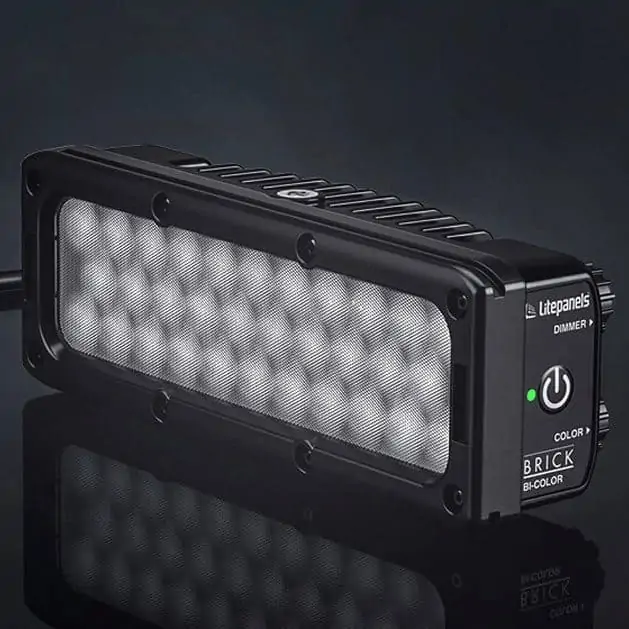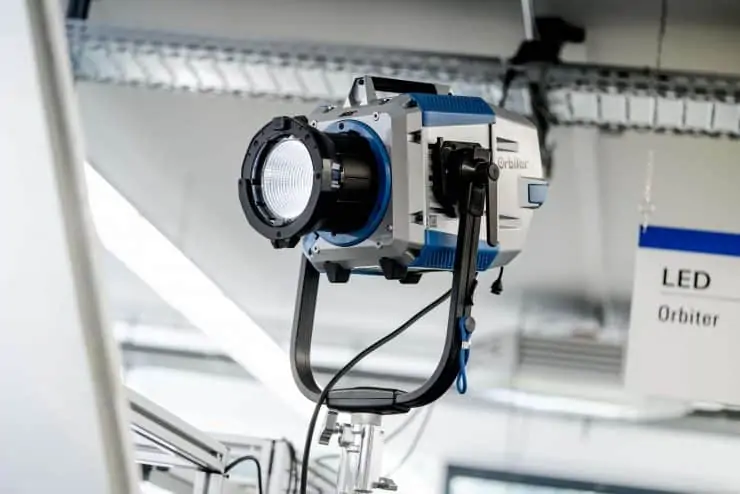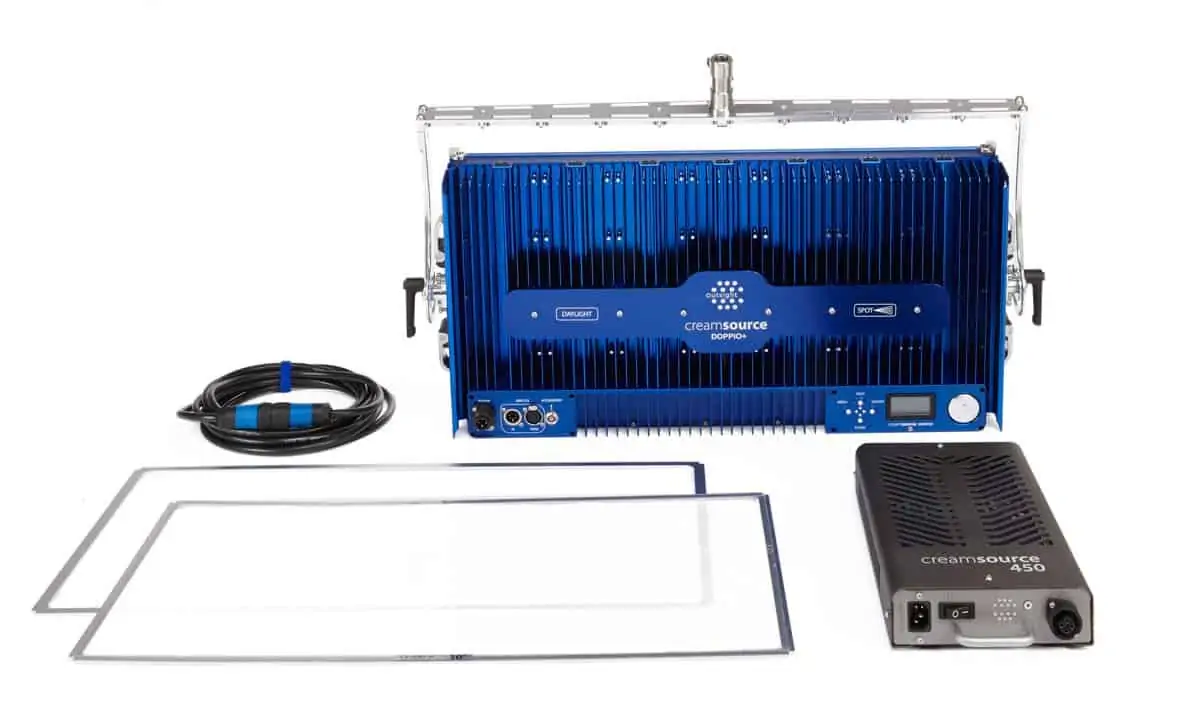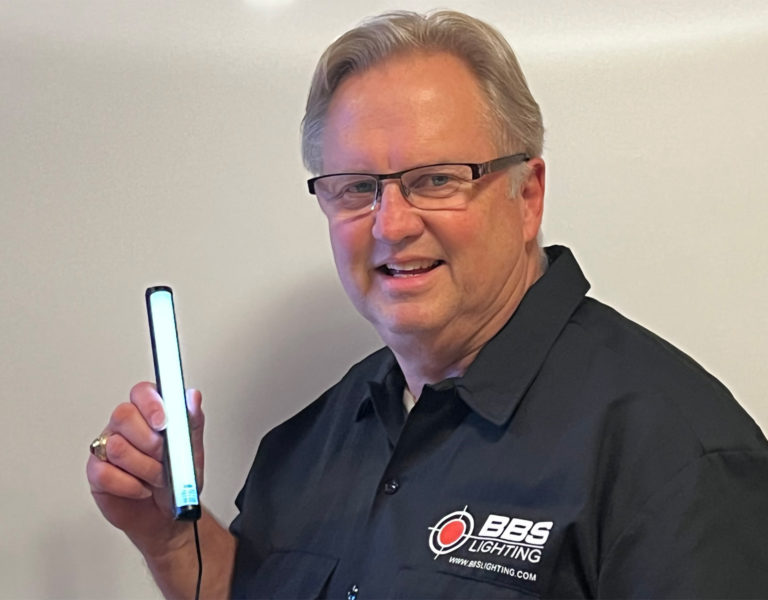PAINTING WITH LIGHT(-EMITTING DIODES)
From colourful punk gigs to offices full of flickering tubes, from cricket pitches made of light to glowing sea monsters, LED technology has opened up many possibilities for creative cinematography.
“Although the quality of tungsten light is in theory better than LED, because of its flexibility [LED] is by far superior to tungsten,” says David Raedeker BSC. “The saving of energy with LED lights is only a byproduct; LED is a no-brainer, in my opinion, all around.
“It goes hand in hand with a wireless dimmer desk often controlled via an iPad, and – more and more – batteries instead of mains power, which is one of its main merits. This greatly reduces cabling and lighting grip infrastructure on the floor and the iPad dimming gives the gaffer unprecedented control and flexibility, even on low-budget productions. This also applies to practicals. Often you can now build custom lights out of LED ribbons for your sets for not much money and exchange LED bulbs with traditional practical bulbs, all controlled wirelessly, for ever more colour and intensity control.”
On his current production – an indie with a small crew – Raedeker carries a 10KW generator as a back-up, but expects to rely on batteries the majority of the time, having a predominantly LED package. As he points out, there are other environmental benefits to LEDs as well: “Units should be updatable to reuse old technology as much as possible and be adaptable to all kinds of applications [to reduce emissions from manufacturing]. There are LED products which try exactly that, using one building block of light for almost everything.”
This ability of LED lighting to adapt to a range of uses is the top reason cited by Markus Förderer ASC BVK for pioneering the technology on 2016’s Independence Day: Resurgence. “As far as I know it was the first studio movie which was entirely LED,” says Förderer. “For a couple of days we had some big HMIs for some sunlight for some special cases, but our main package was all LEDs.”
Special applications such as green screen illumination or lightning effects traditionally required particular fixtures, pre-planned and booked for specific days, but Förderer saw that LEDs were more flexible. “I know if we’re short of a couple of lights, I can literally grab the lights we’re using to light that green screen and light the talent with it, for example, or put it outside a window… When I saw that the colour rendition got so good at that point in time… it was just clear we don’t need to have this massive lighting package.”
Since 2016, LED technology has come on leaps and bounds. Förderer highlights better optics, more hard-light options, and more emitters for truer colours amongst the improvements. These days the DP says he does his on-set grading not with the DIT but with the dimmer board operator, tweaking colours and levels.
Förderer’s most recent project is the upcoming September 5, a 1970s-set thriller for Paramount. Taking place largely in office spaces, the film’s main sources are “fluorescent” tubes – in reality LEDs. “We used Astera tubes, hundreds of Astera tubes,” says the DP. “I was really fascinated by the flicker; fluorescent tubes are never perfectly on, especially if they’re not brand new. My wife is a board operator, so on the weekends we took one tube home or to the hotel room, and we could pre-programme subtle flicker effects…. Whenever the tension is very high we use these subtle flickers… It really does something to your heart rate when you feel subconsciously the lights are flickering.”
All-round solutions
Ashley Barron ACS used Astera tubes extensively for night interiors on the period drama Dangerous Liaisons. “My director had a real 360 approach to how we shot each scene in terms of coverage,” she remarks. “The Asteras were used twofold. One way was to hide Asteras around the set to be able to create pools of light or separation – hiding behind couches to point at a wall, or to stick on the back of a candelabra to light the wall behind it… And then on top of that, because we were so mobile, and had actors who needed to be lit, I would often have either Asteras or a couple of LED soft-boxes that my gaffer had built that would be in hand, and essentially they would follow around the Steadicam, dolly or handheld. It was a real dance.”
Barron determined that adding Asteras of a more neutral colour to the candlelight was beneficial in grading. “I found candles have a narrow colour spectrum, providing less colour rendition in both skin-tones and design, and thus less flexibility in the image,” she opines. “Having Asteras not only provided a broader spectrum but also allowed for some contrast for the eye so it’s not just warm candlelight everywhere. You can create a sense of coolness like ambient moonlight that cuts through that warmth.”
Xavier Dolléans AFC used a different brand of LED tube, the Aquabat from MBS, on the French network TV series Rivages. Filmed in Fécamp, Normandy, Rivages follows an oceanographer on the trail of a bio-luminescent sea monster. “We shot from September to December and the weather was kind of a nightmare,” Dolléans explains, “so very quickly my gaffer [Tom Van den Abbeele] came to me, and said, ‘We should think more about what kind of equipment we can use in terms of LED, and we need that equipment to be weatherproof, windproof, waterproof, and to be used by a small group too,’ because the crew was very small.”
Van den Abbeele, an official rep for MBS, recommended Aquabat tubes. These RGBWW fixtures come in 4ft/1.2m and 8ft/2.4m lengths and are fully submersible to 10m. Van den Abbeele’s team constructed a rig of Aquabats to represent the monster, providing interactive light and a VFX reference of the glow beneath the waves.
Away from underwater or interactive lighting, Dolléans would often put four of the Aquabats on a regular stand and use it as a key. “Doing that you have a 2.4×2.4m square, very soft source, and that was great, because you don’t have any diffusion to put on, so this is easier to use in the wind.”
Eschewing HMIs entirely for night exteriors, the Rivages crew instead used moving heads – Ayrton Domino Profiles and SolaHyBeam 3000s – for all their large hard sources. The beauty of moving heads was that Van den Abbeele and just two sparks could operate and reposition multiple sources quickly and easily. “I’m very sensitive to the spectrum, the quality of the light,” says Dolléans, “and in terms of spectrum, the SolaHyBeam 3000 are better, but they are not IP68 rated. They are not really protected for the rain.” He decided, “For the background let’s use Ayrton Dominoes, because the quality of the spectrum is less good, and then for everything where we are lighting the faces and the costume and the foreground we are going to use the SolaHyBeam 3000.”
The Aputure LS 600x was Surjith S Pai’s fixture of choice when he needed to create a cricket pitch of light for a commercial. “The goal of the project was to showcase diversity of working women in the South Indian state of Tamil Nadu,” he explains. “Because of budget restrictions we decided to go for a rather minimal approach wherein all the women would be shot against the studio cyclorama wall and the points of interest and distinction would be made solely by lighting.”
One of the five women showcased is a cricketer. “I replicated the shape and lines of a cricket pitch with some Aputure lights and lit the scene entirely with this setup,” says Pai. Four Aputure LS 600x fixtures were rigged overhead with spotlight mounts, two in the middle with 36-degree beams, and one at either end representing the batters’ grounds with 26-degree beams. Pai used the mounts’ internal shutters to achieve the correct shapes and keep the creases of his pitch dark. “For the tighter shots a loose satin fabric was laid on the floor and I added another Aputure LS 600x bounce.”
Pops of colour
A Muslim female punk band is the subject of We Are Lady Parts, a Channel 4 sitcom from Working Title Television, part of Universal International Studios. “This show is really bright and really colourful, really out there,” comments DP Diana Olifirova, “and I think it’s quite interesting how it progresses throughout, from first episode to sixth, because we approached it as a movie… Thinking about it from beginning to the end, and how the colour maybe represents some feelings that characters have, as well as obviously having interesting setups for different locations.”
Olifirova’s package contained LED Source Fours, Creamsource Vortexes, and LiteMat 2Ls with crates mounted inside Kino Flo housings “to control it even more”. She also carried AX3 pucks and AX5 TriplePARs from Astera. These last were employed as eye-lights or to pepper in background highlights. “They are very versatile and easy to hide,” she remarks.
But LEDs were only part of Olifirova’s palette; traditional tungsten units like Dedolights and Molebeams were also represented. “I ordered at least 20 different gels,” adds the DP, “so we can play with all the colours we want, and really craft the scene in that way.”
She highlights a particular interior taking place at sunset. “There I used a mix of pink, purple, and orange, so it’s kind of sunset colours, but they’re quite strong. So it does blend reality into the surreal. And I like to play with that a lot in this show, I think.
“Overall, combining LED and old-school tungsten gives a lot of joy and makes me believe in the world more as this is what we use in real life – a cacophony of sources, colours and influences. It inspires me!”










